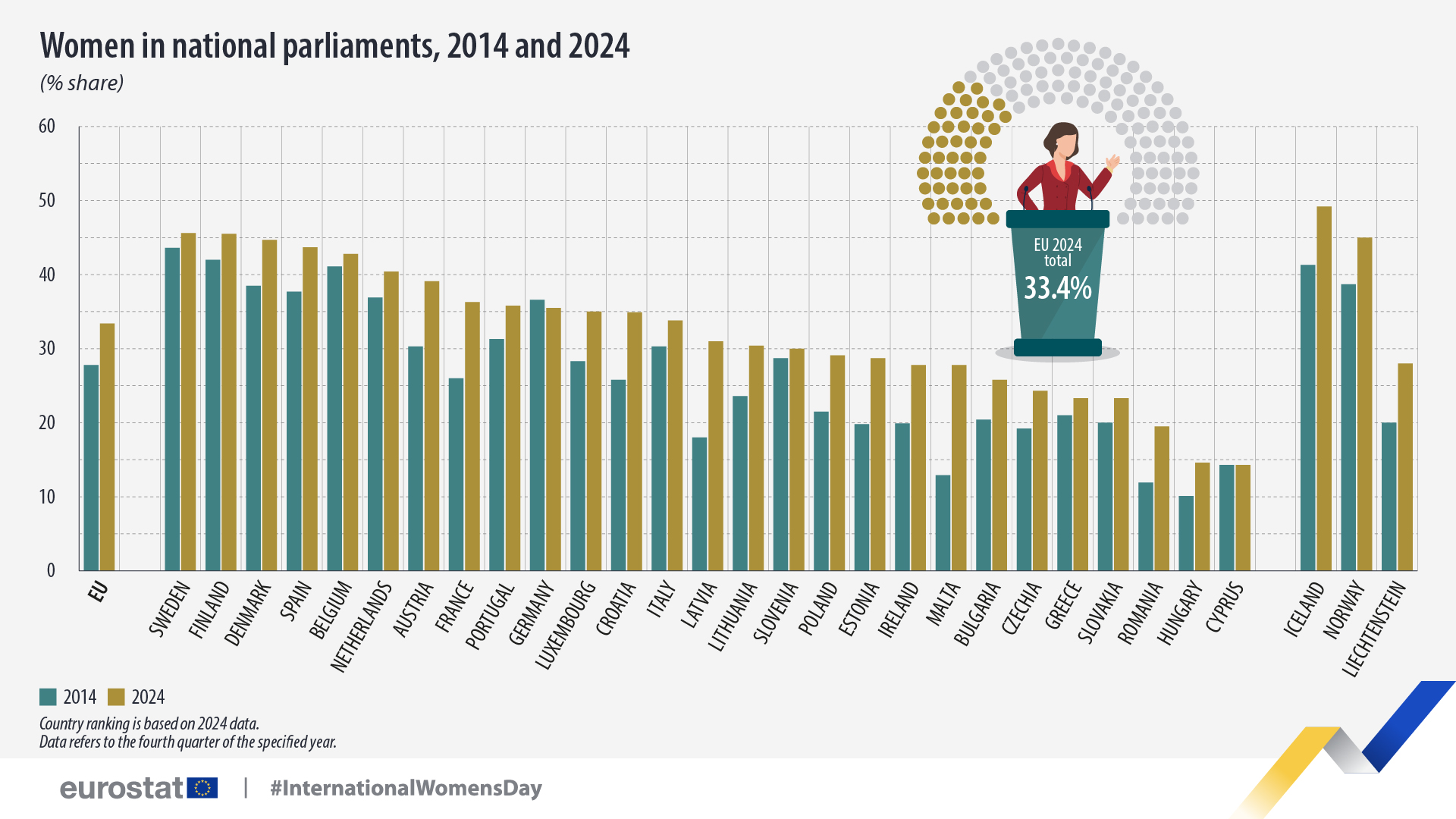In 2024, women held one-third (33.4%) of seats in national parliaments across the EU, a 5.6 percentage point increase from 2014, Eurostat reports.
Sweden, Finland, and Denmark lead with nearly 50% female representation in their parliaments. Cyprus, Hungary, and Romania have the lowest share of women, with less than 20% female representation.
Malta, Latvia, and France saw the most significant increases in female representation in their parliaments since 2014.

